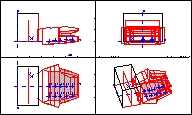
Soundplan
Do you want to carry out an acoustic survey for a new bypass road? Or do you need an exact noise simulation for a planned industrial estate? Do you have an open-plan office that is to be optimised in respect of room acoustics? And you want to be sure that the solution is going to be up-to-date?
Then SoundPLAN is the right choice for you: With our professional noise simulation software, we offer you exactly the right tools for your projects.
With SoundPLANnoise, you receive a program package that not only provides solutions for typical noise protection problems, but is also designed to meet special requirements. Due to its modular structure, you can easily adapt this comprehensive software to fit your individual needs.
SoundPLANessential is the right software for you if you are working on a project which only occasionally requires you to take noise-related questions into account. This efficient and easy-to-learn program is particularly suitable for standard noise simulation cases.





